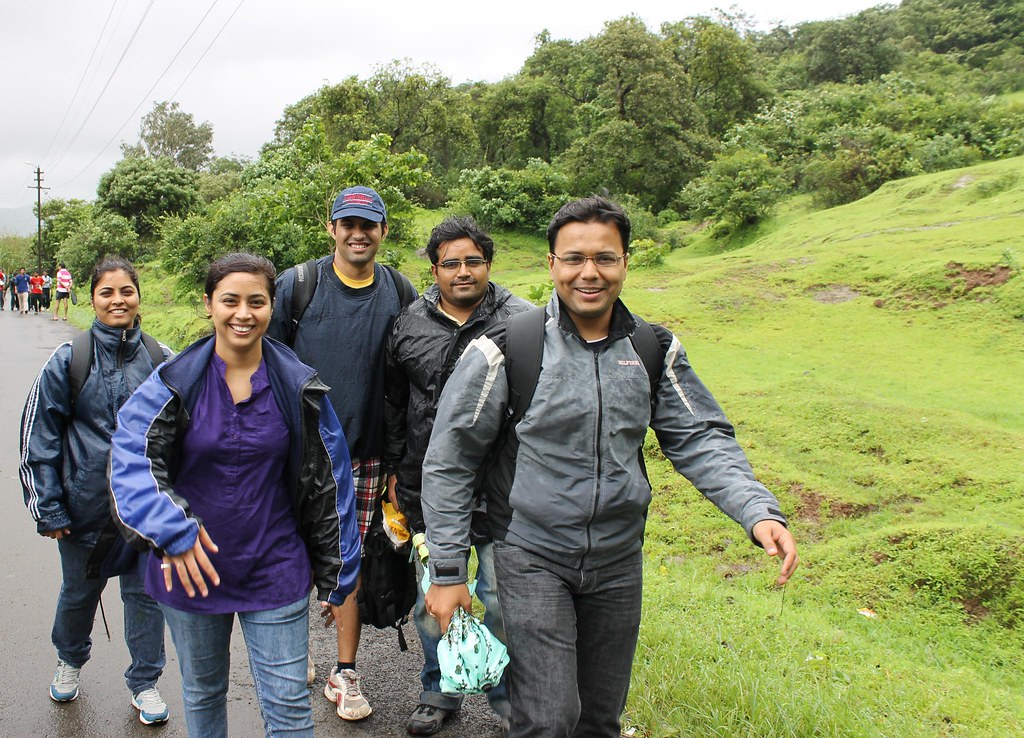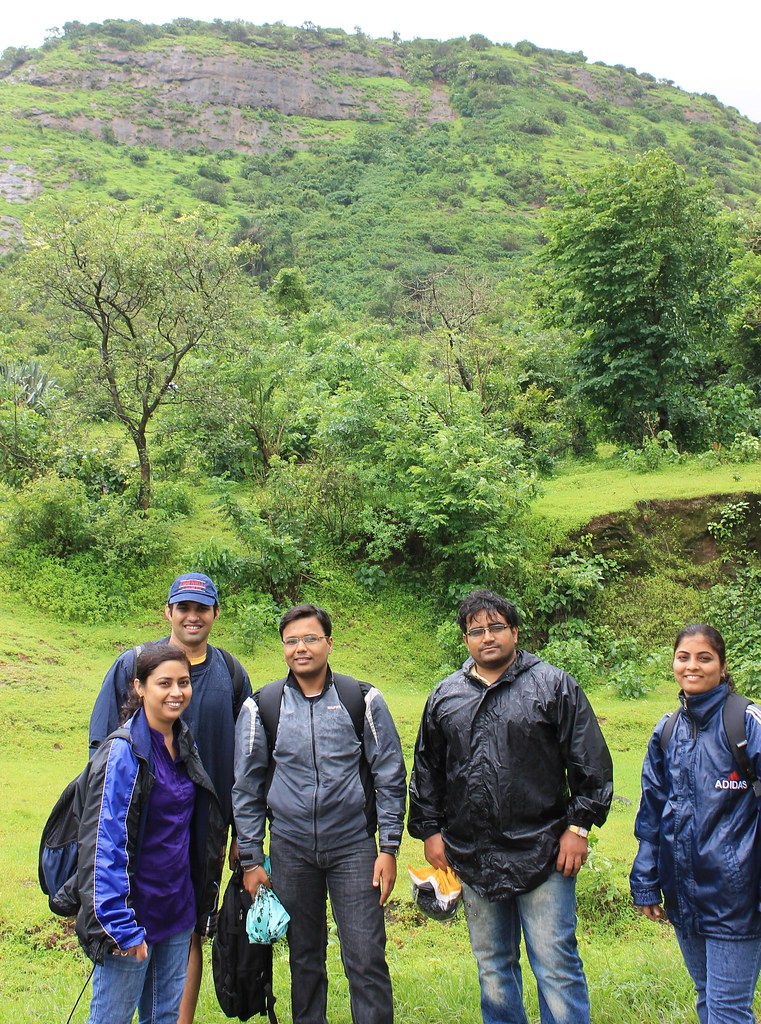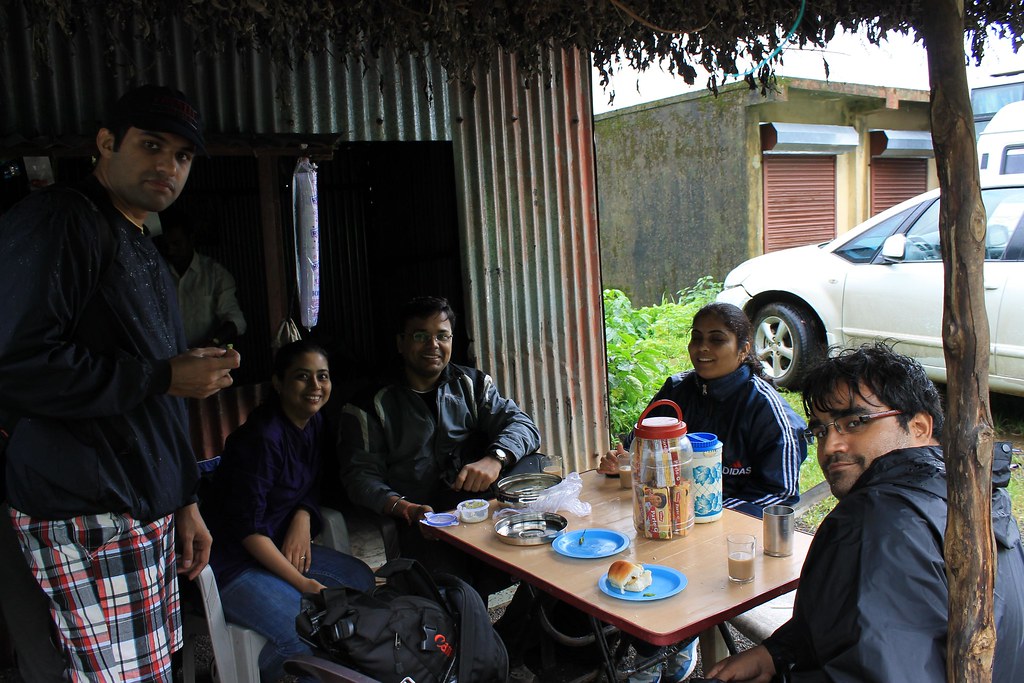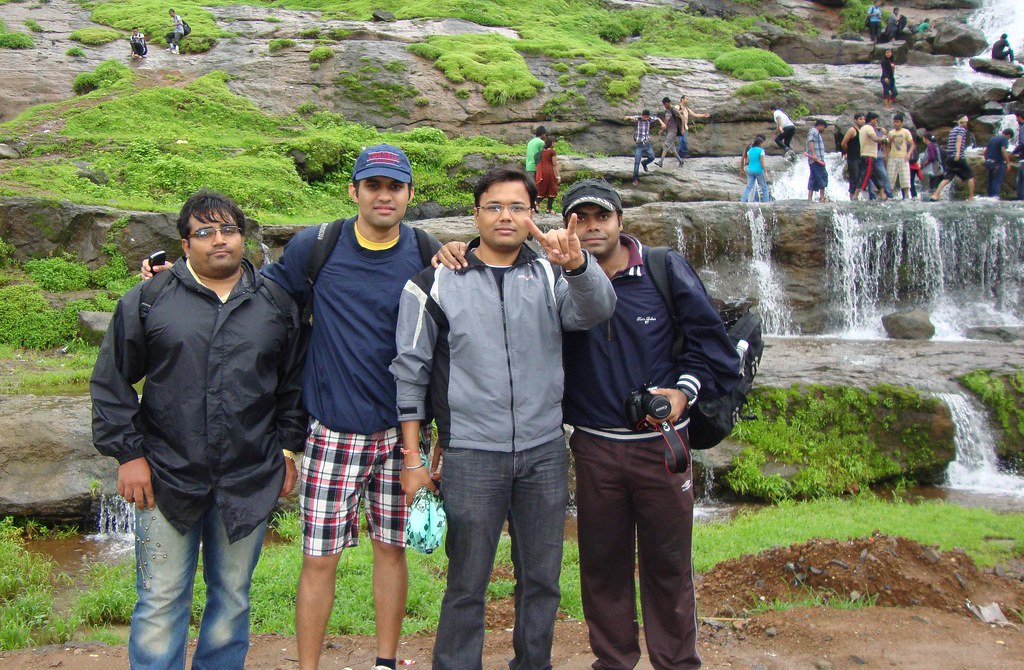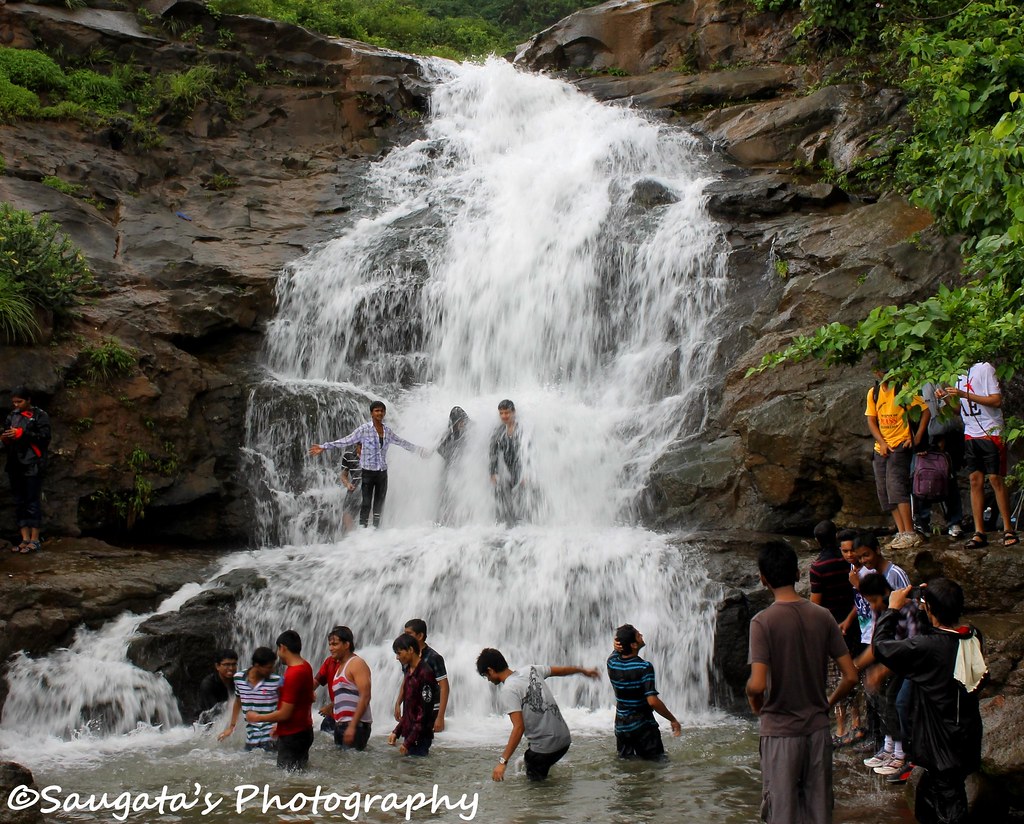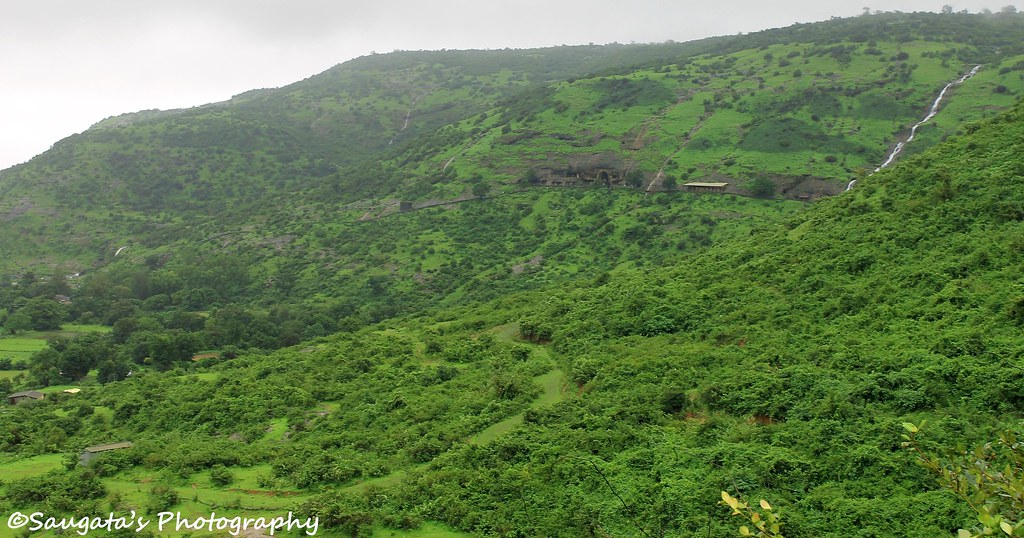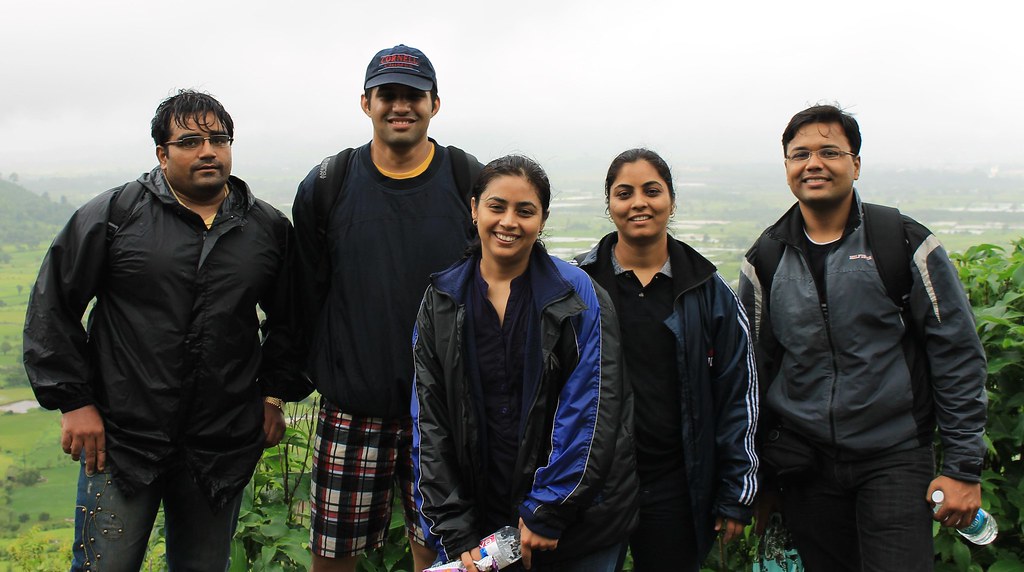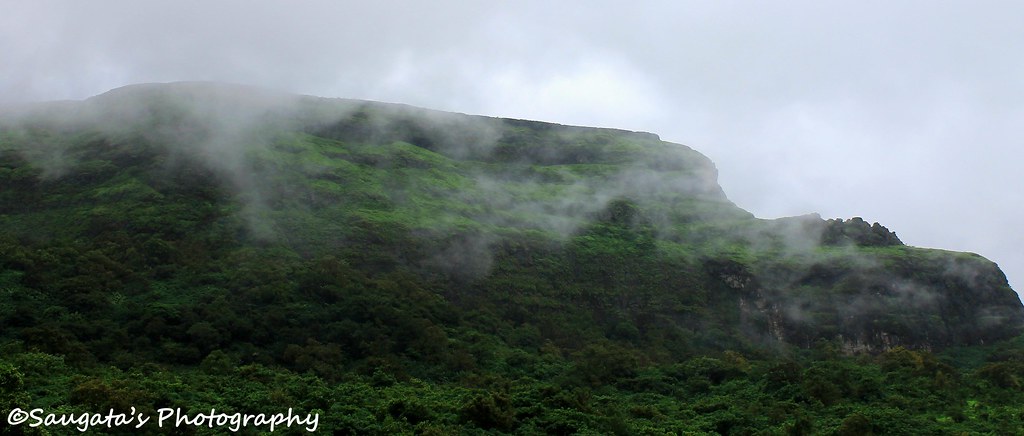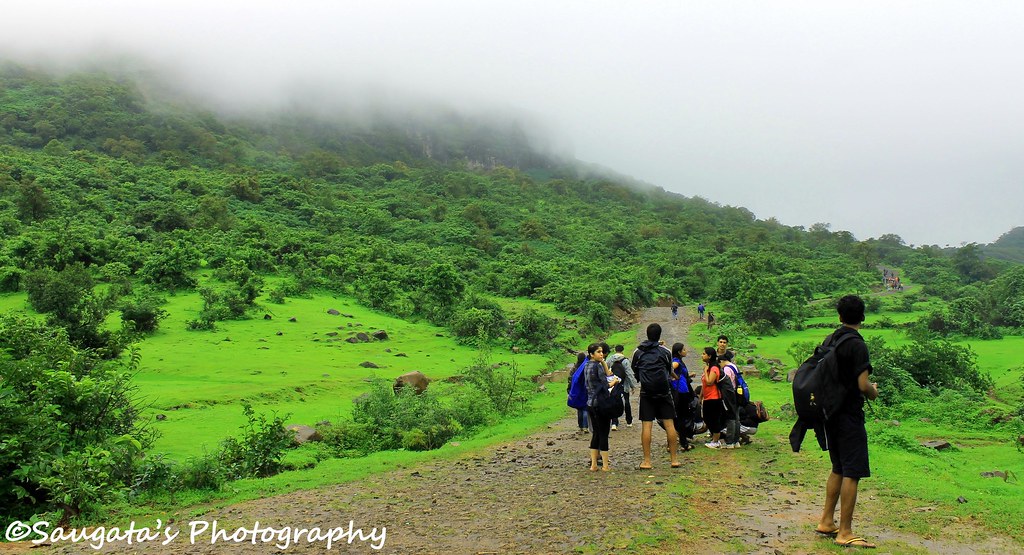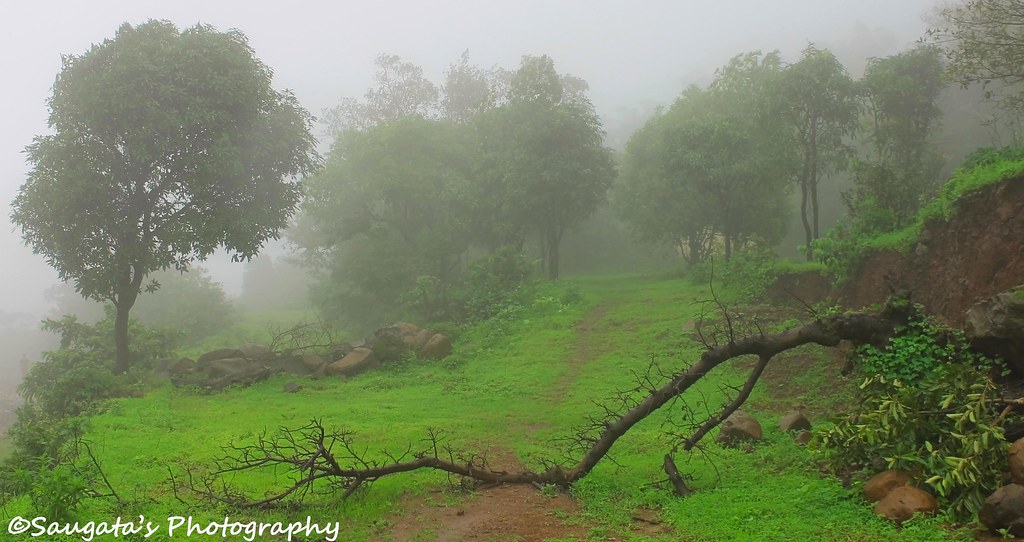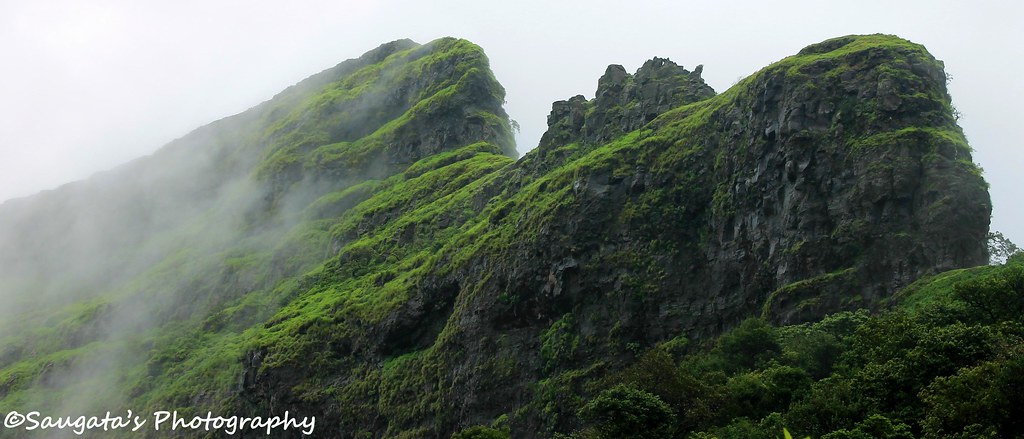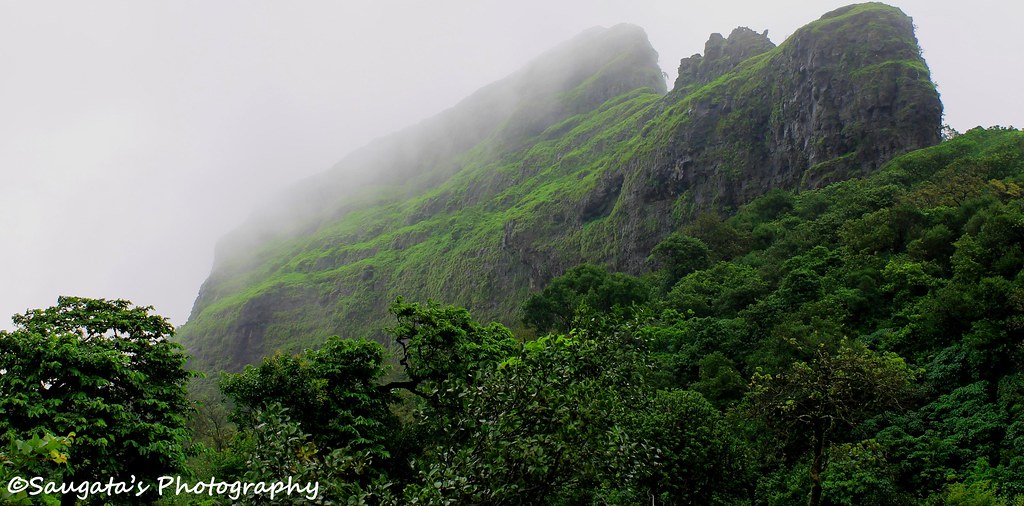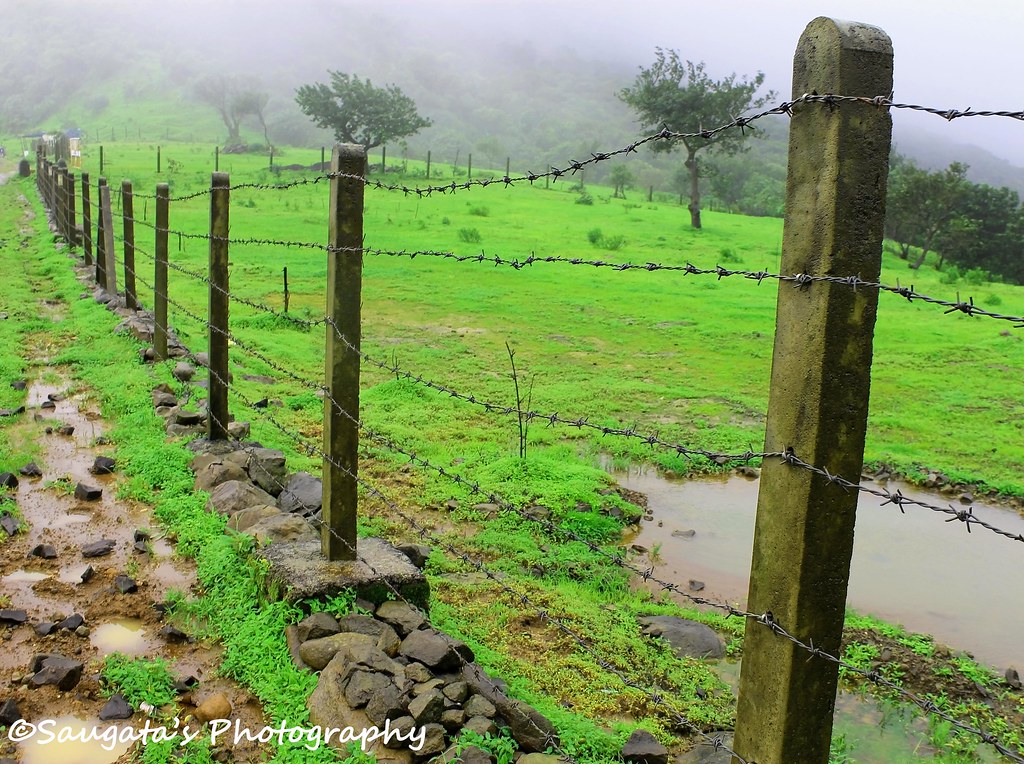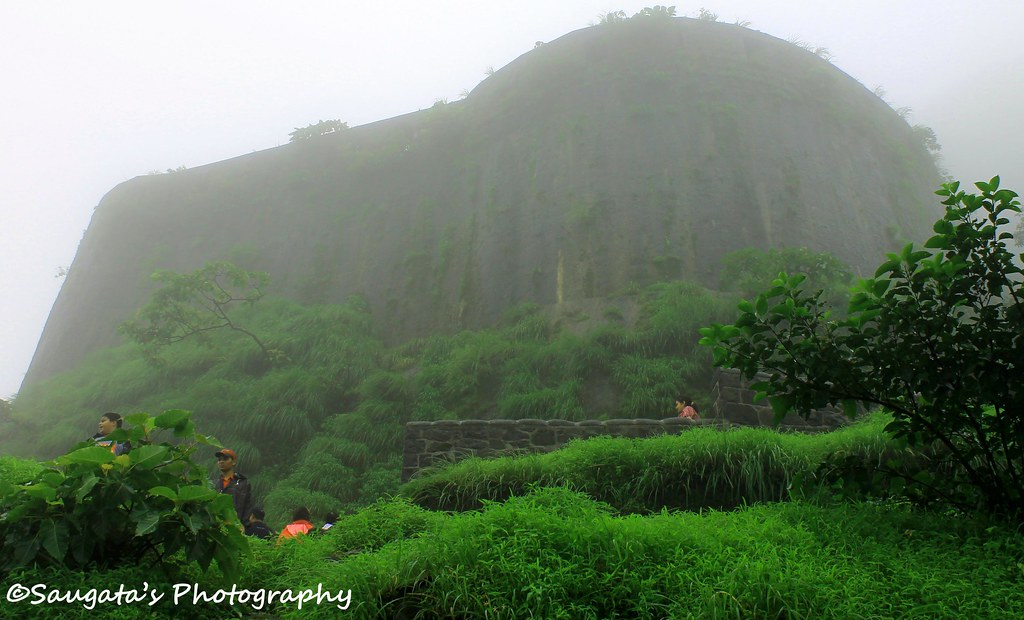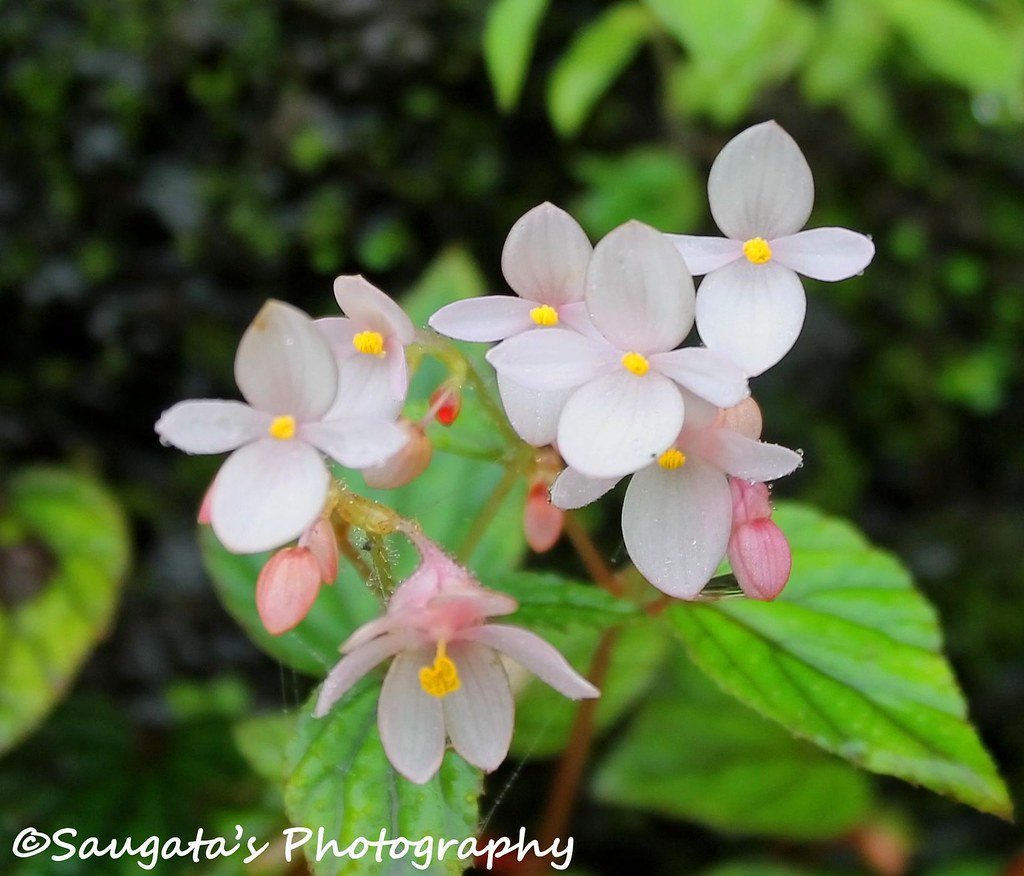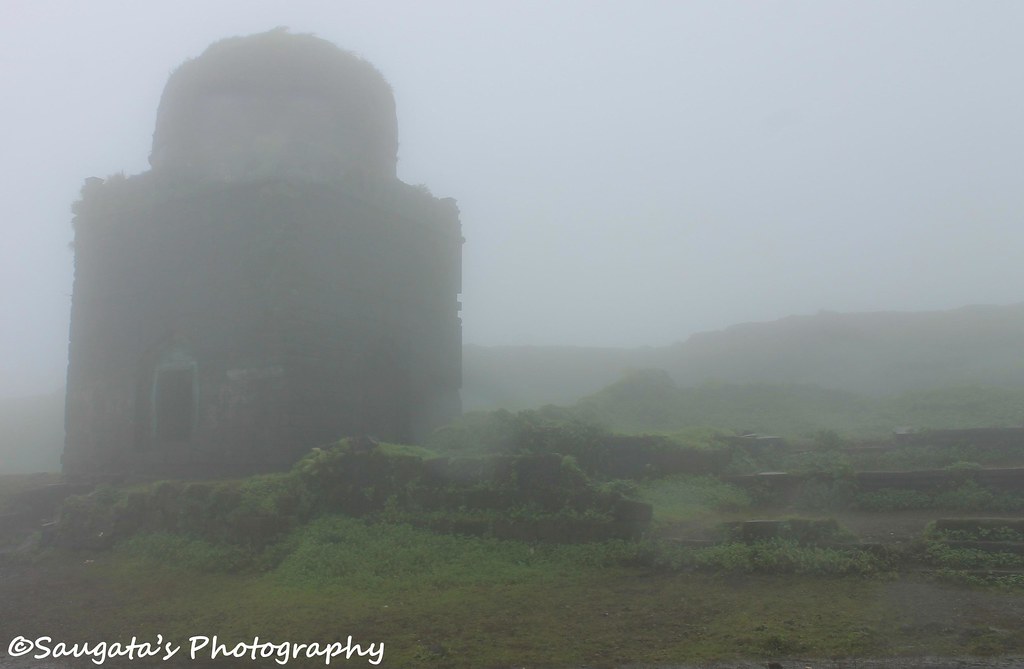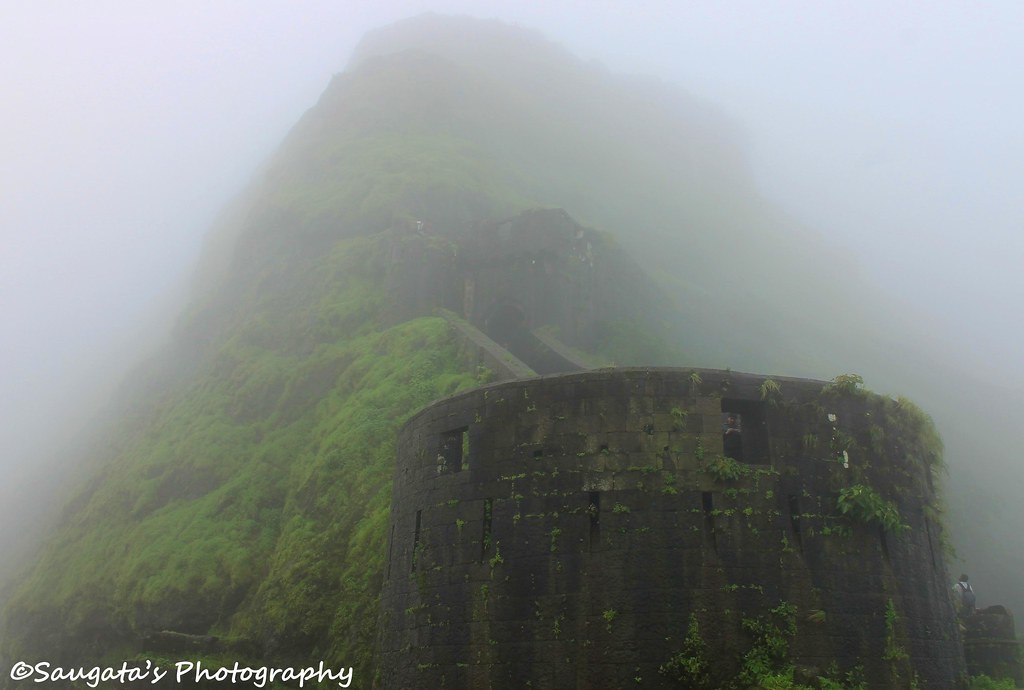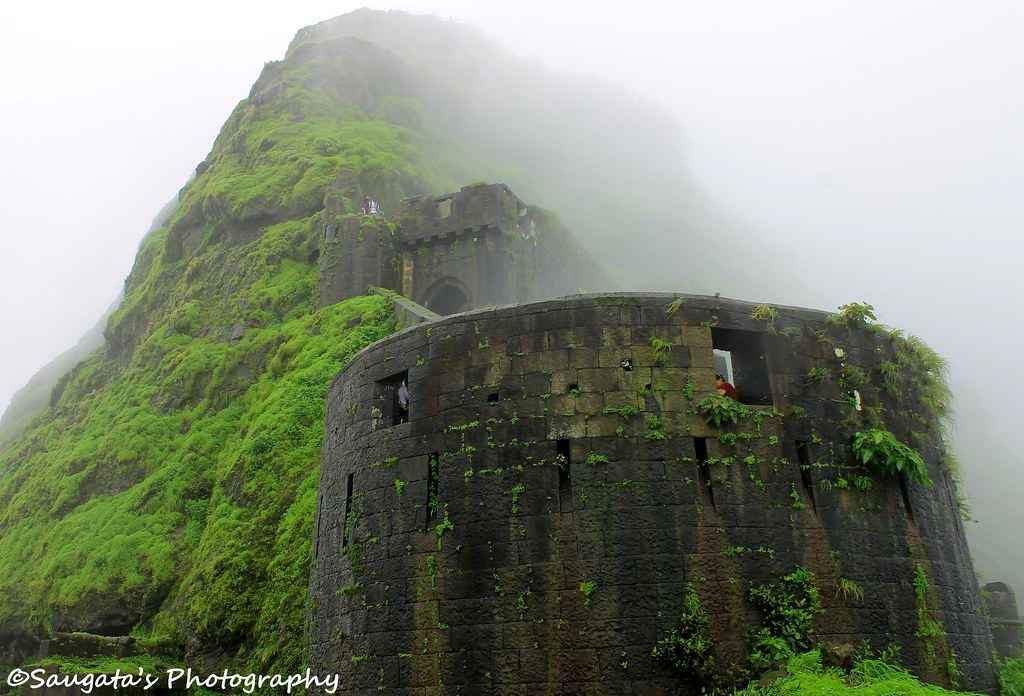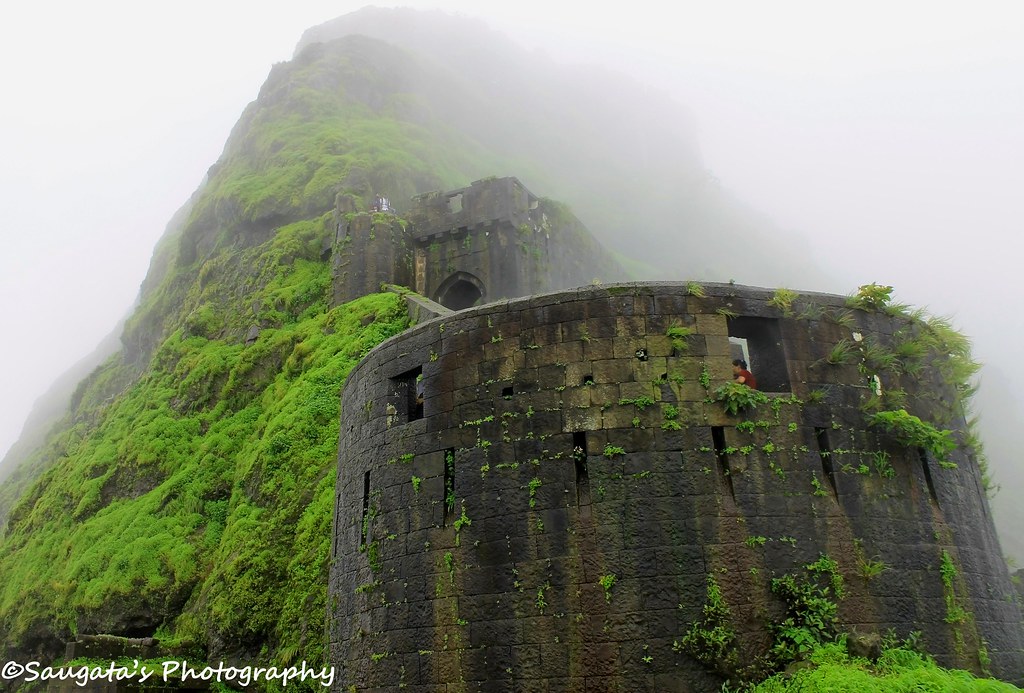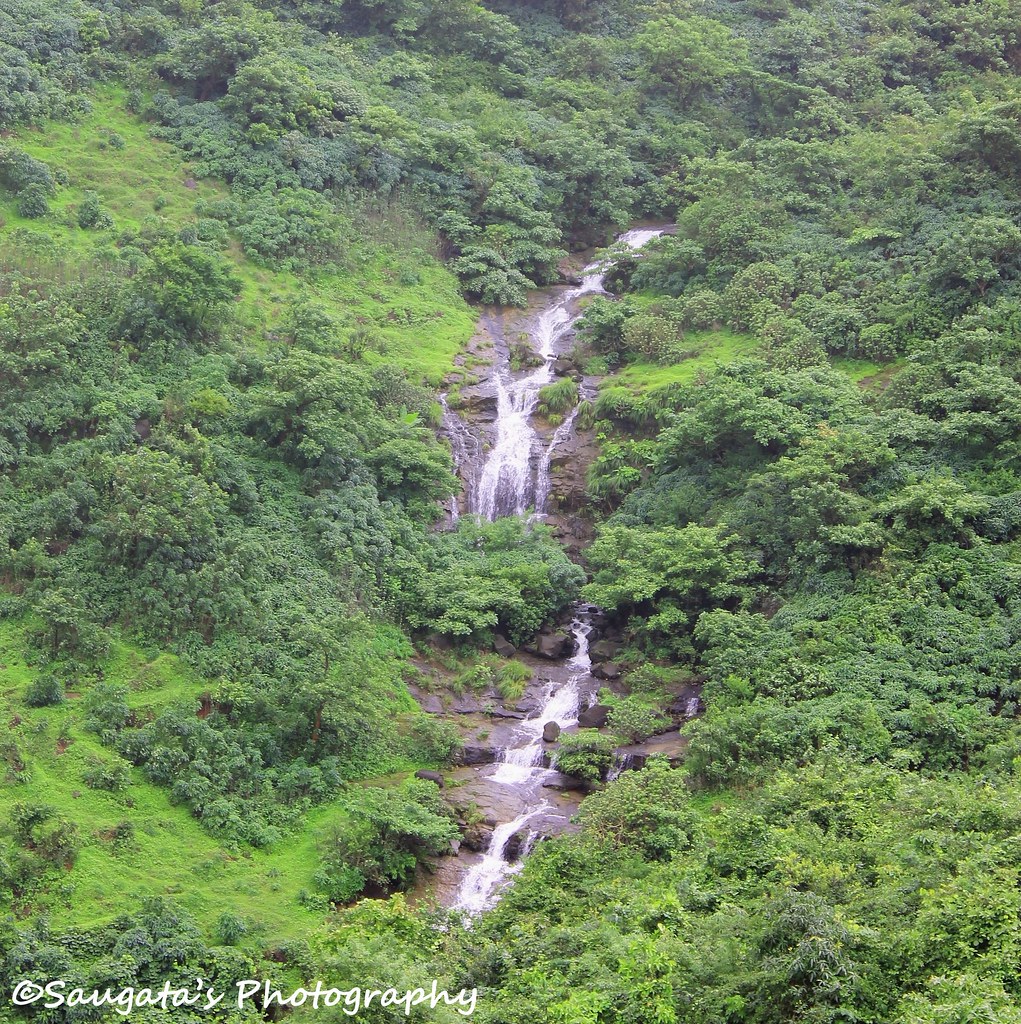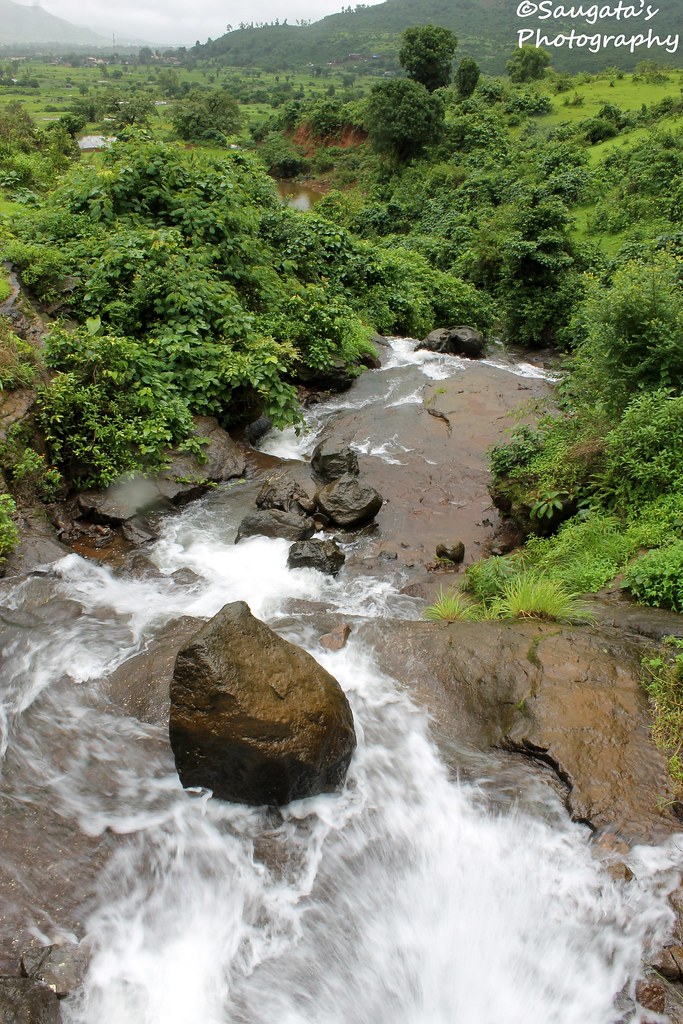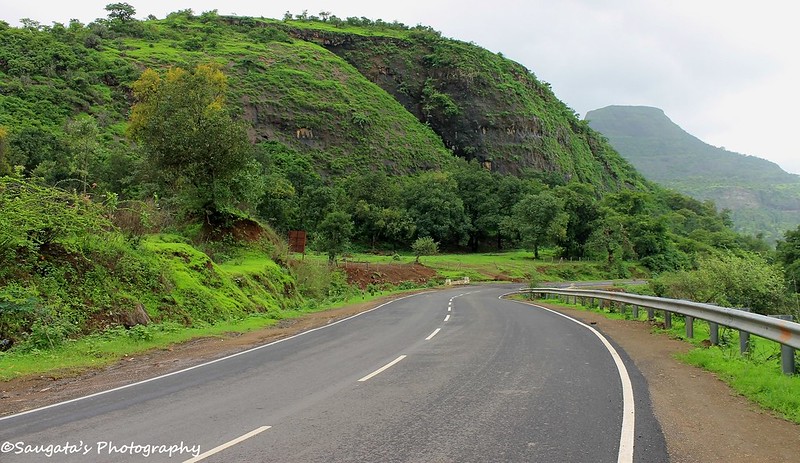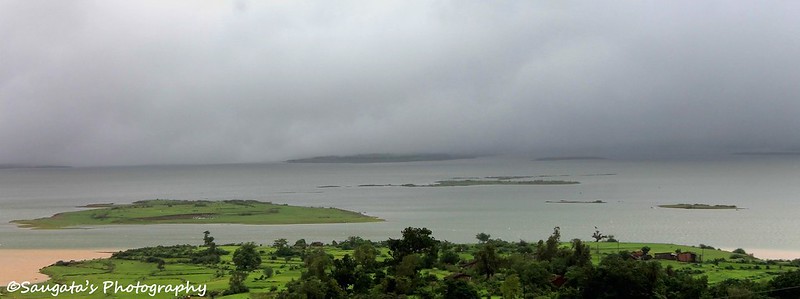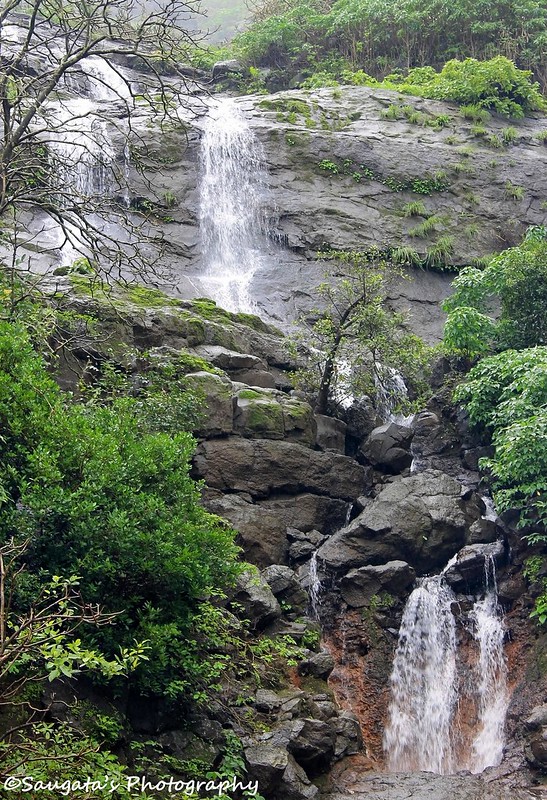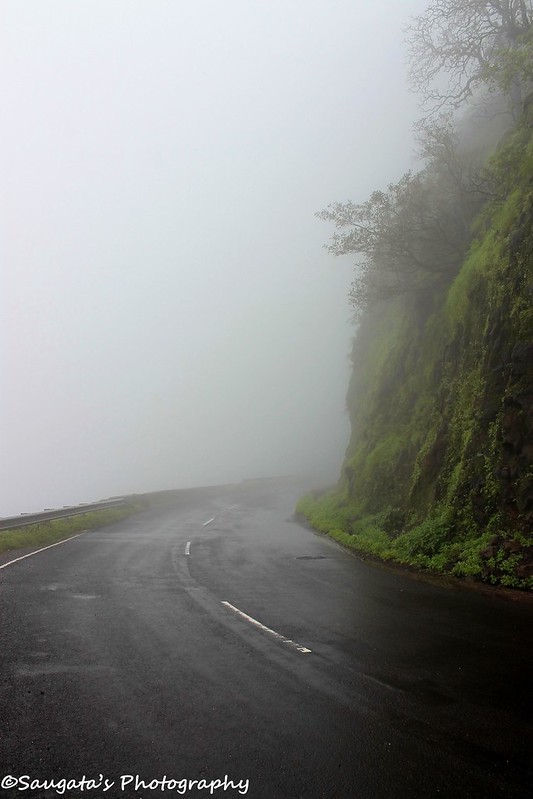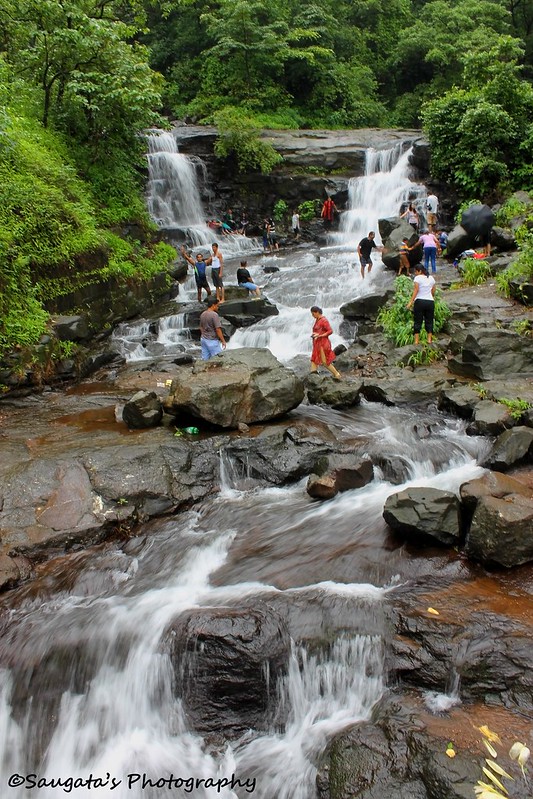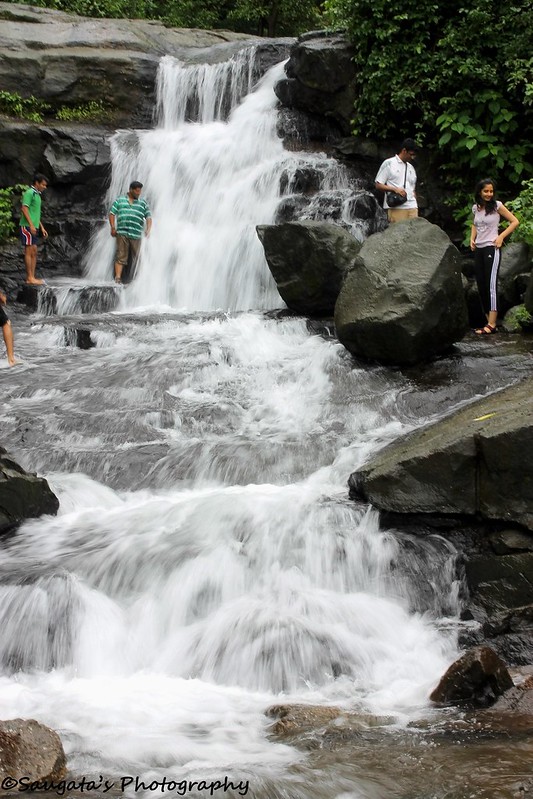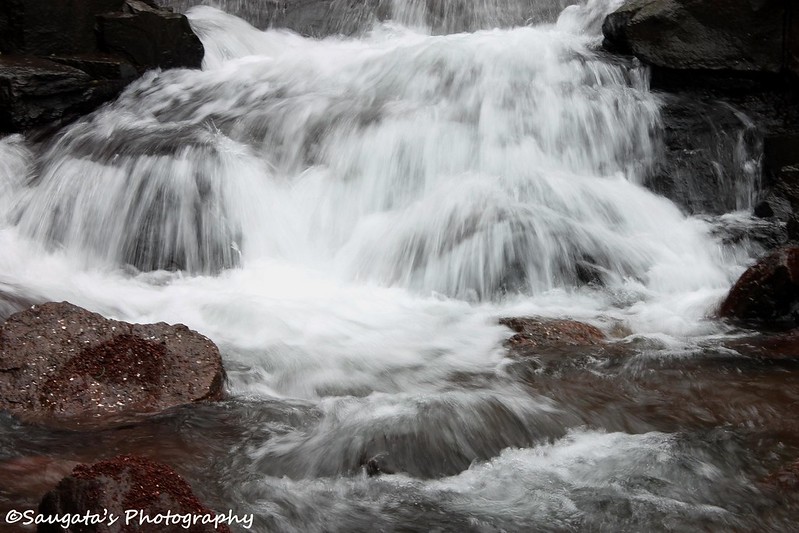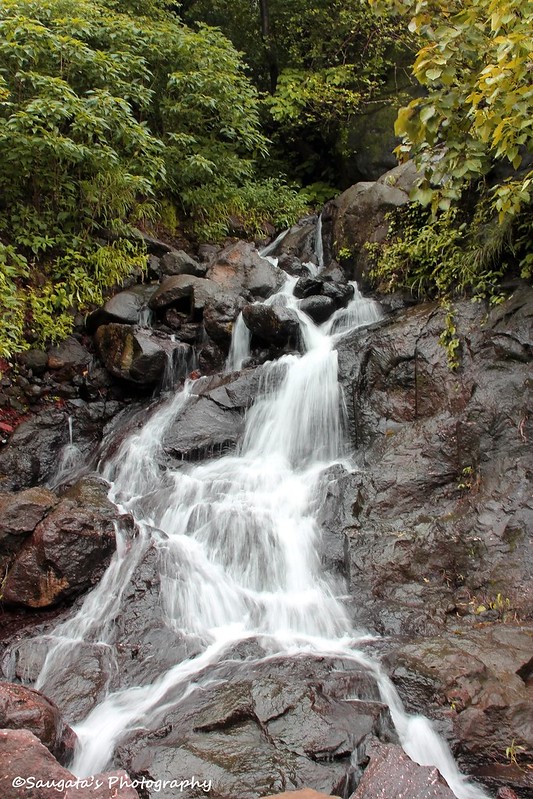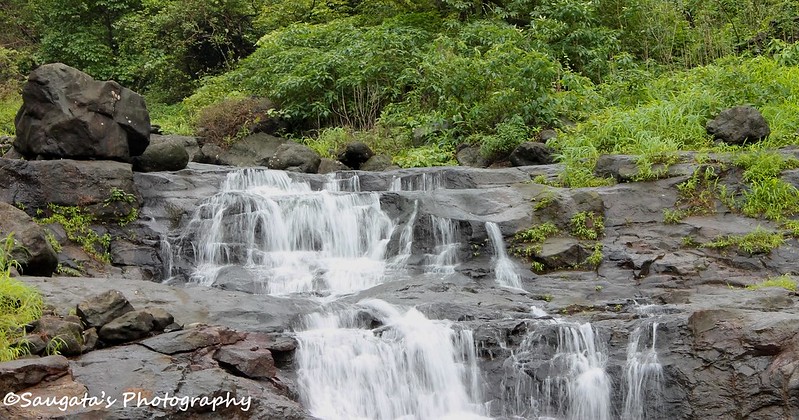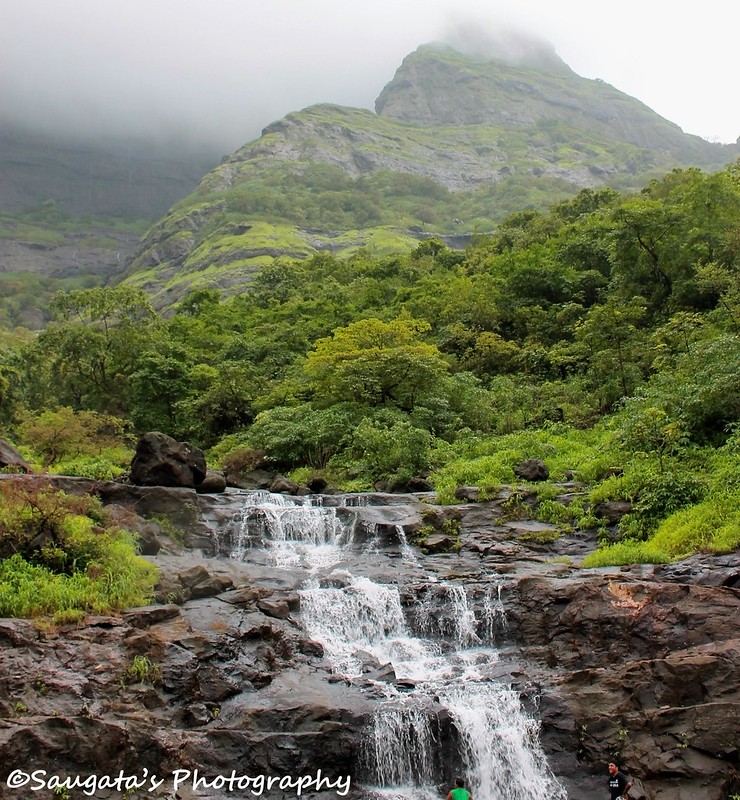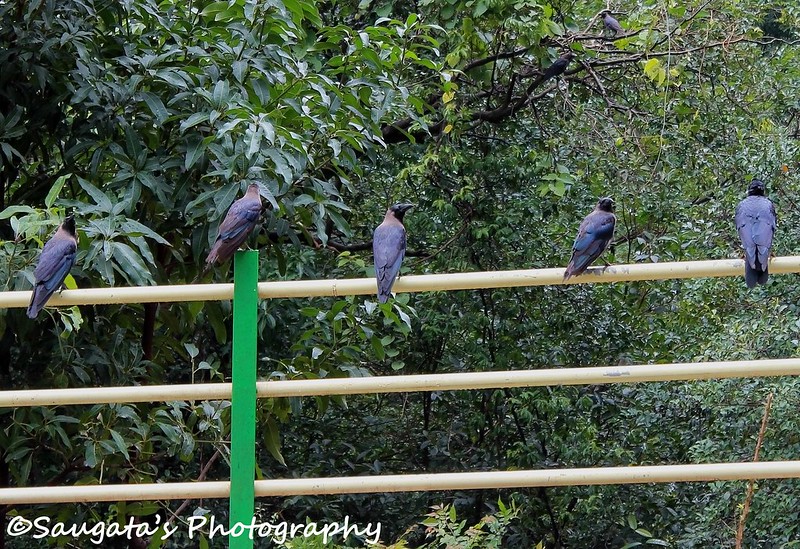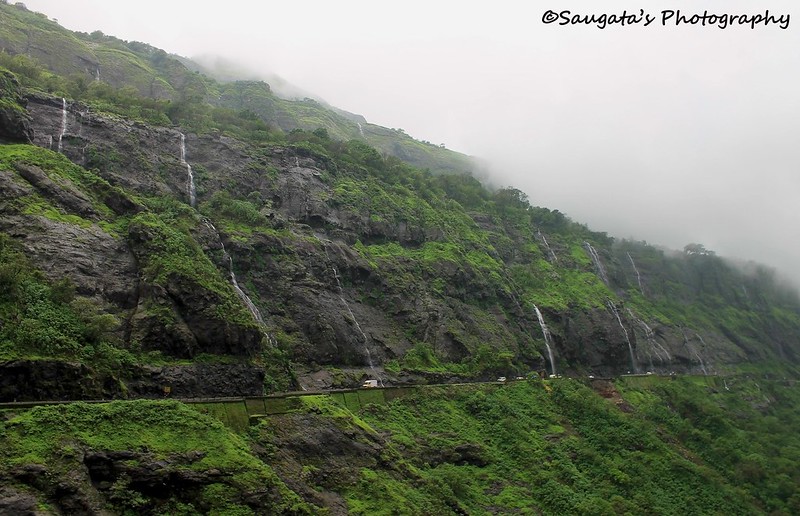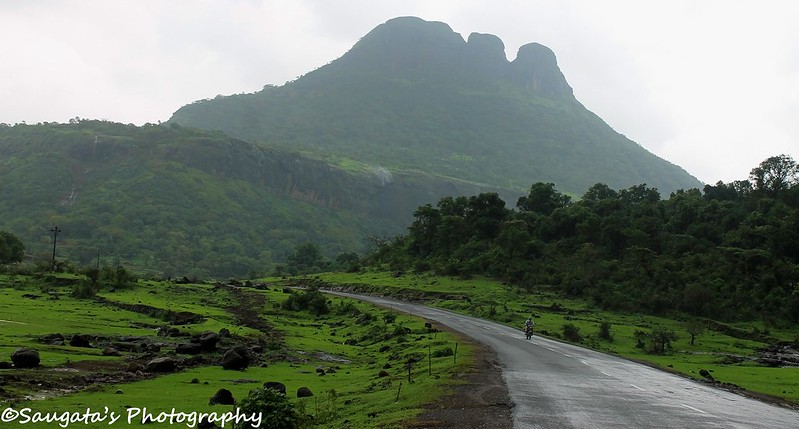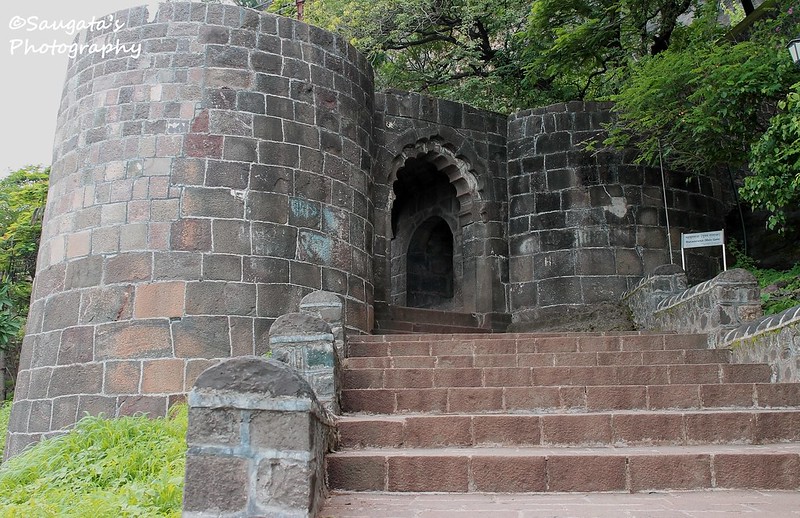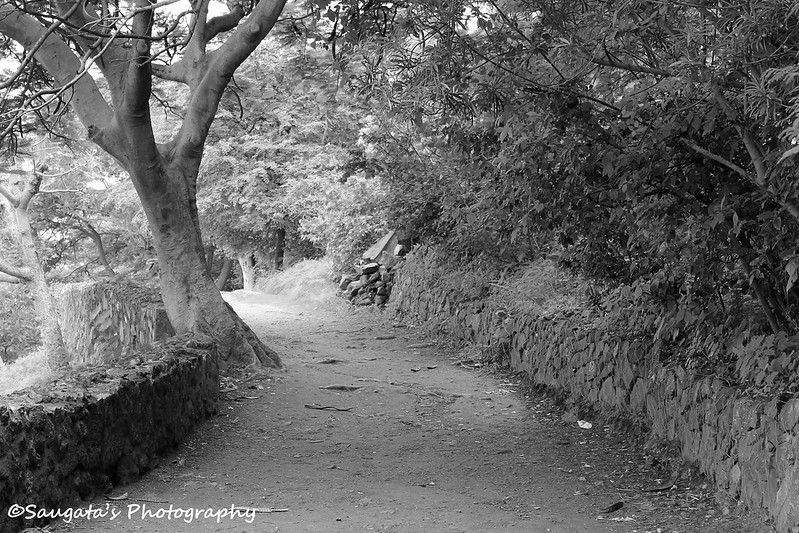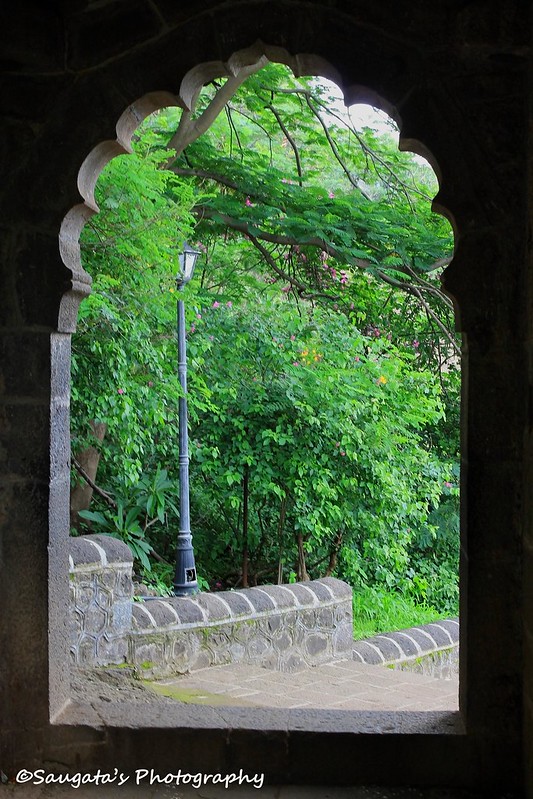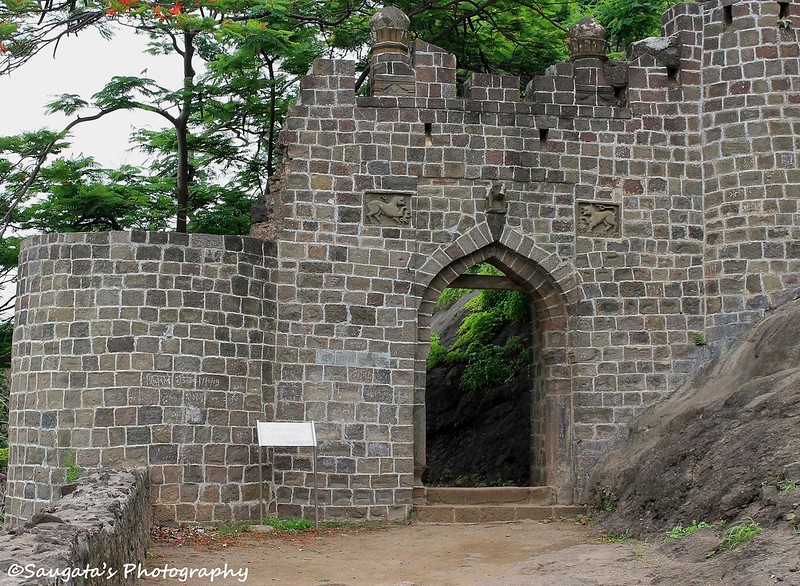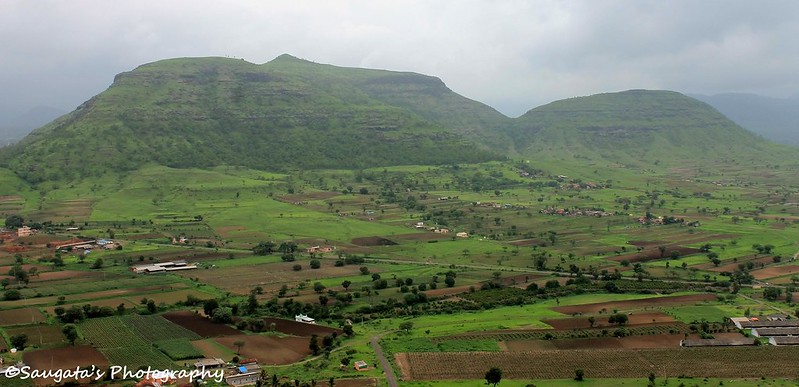The Iron Fort - as known to Lohagad - is one of the strongest forts in Maharastra and obviously is in much better condition withstanding the scorching heat of summer and relentless rain in the monsoon. The name Iron Fort henceforth bears enough significance of its strength and power.
Quoting from Wikipedia -
''Lohagad has a long history with several dynasties occupying it at different periods of time: Satavahanas, Chalukyas, Rashtrakutas, Yadavas, Bahamanis, Nizamshahis, Mughals and Marathas. Shivaji captured it in 1648 CE, but he was forced to surrender it to the Mughals in 1665 CE by the Treaty of Purandar. Shivaji recaptured the fort in 1670 CE and used it for keeping his treasury. This fort was used to keep the loot from Surat. Later in Peshwa time Nana Phadanwis used this fort for living for sometime. The fort has been declared as a protected moument by the government"
At office, we started planning for a trek with as many team members together as possible. We opted for Lohagad since it was supposed to be a trek for beginners like us. Many people promised, many showed interest, then a few weaklings backed out, a few showed 'arbitrary' reasons for dropping off like leaves from a tree in winter - but finally 6 of us stuck together to make this trip successful. So a special thanks goes to Damodar, Vishal, Aakanksha, Vaishali and Ashmant - in no particular order. And obviously, I am the sixth person to be thanked here.
We chalked out the mission plan in unison. The plan was simple - we'd catch a Lonavala bound local train in the morning and reach Malavli after an hour or so and then take an auto to the Bhaje village and start the trek, We'd come back following the reverser order of the plan. We also outlined who'd carry what for the trek and promised to meet at the Pune stattion at 7.30 am.
Ashmant picked me up at 7.15 in the morning on the D-day and we were at Pune station by 7.30 am, almost sharp. We boarded the local train scheduled o leave at 8 which it did on time. We reached Malavli at 9.30 am-ish. The first setback we faced is that there was no auto as per the plan, So we decided (read we had to) to walk towards the Bhaje village, which was around 2 km from the station. And rain was our constant companion but we didn't bother because that was the fun - walking in the rain. Everyone seemed to have high spirits.
We stopped at a small food joint to have our breakfast - Tea, Wadapav and wonderful homemade Dhoklas (courtesy Vishal's wife). The greenery already started making itself visible, like a teaser of a movie. So wasting not much time, we were at the base of the Bhaje village.
Bhaje village also houses the renowned Bhaje caves. At the very beginning, an amazing waterfall - though as usual thronged by over-enthusiastic people - was a bonus.
We started our trek, leaving the waterfalls behind and the stairs to Bhaje caves on our left. Many groups embarked on the same mission to conquer the Iron Fort as us. Some lagged behind, some moved ahead. After a stretch of a flat road for around quarter of an hour, the Bhaje caves faded at a distance and we came across a gushing cascade - again, mobbed.
We went ahead after a quick photo session. Looking back, I noticed the Bhaje caves had faded into the distance. The waterfall which we just left behind, was actually a part of a long silver line that penetrated its way through the hills, amidst the greenery.
We moved on and on - the condition of the road varied, ranging from steep to flat, but mostly an upward climb with loose pebbles and stones all around. On top of that, a few muddy stretches made it even more difficult to move on.
We were fatigued, so we took rest at one of the tea stalls on the way, not for long. A rugged hill in front of us was playing hide and seek with the fog. The entire land as we could see was under a green carpet, barring the earthen road that led to our destination.
We proceeded ahead, the rugged hill came closer and we were ecstatic assuming this was the final destination - but it wasn't. We still had not reached even at the base of the fort, so we followed the other explorers and the road - if one can call it a road.
Finally, after almost a couple of hours of arduous trek - arduous by our standards obviously - we reached at the base of the fort, surprisingly much ahead of our planned schedule. That itself was a cause for celebration and it lifted our morale without any doubt.
A steep series of stairs showed the way up. We ascended. The reminiscence of ancient ages started unfolding themselves, in the form of a few canons on the way.
Exhausted, we could see the fortifications finally.Covered under the mist, the solid rock walls looked impregnable. The mist was spreading fast engulfing the whole place with its white sheet. At one instance we could not even see the stais that we were climbing.
Dangerous slippery stairs, wind and merciless rain - we surpassed all obstacles and reached the top but the weather did not improved and everything remained covered under the fog. We could only notice a ruined a structure which seemed to be an ancient temple at the top.
The rain and the wind were so relentless that it was difficuly to withstand for long. As the visibility did not improve, we lost all hopes to enjoy the beauty of the valley below and the famous Scorpion's sting ('Vinchu Kata') and we started going downward.
Going downstairs we had our lunch - this time courtesy Damodar and Aakanksha - with cookies, cakes and banana. It would not sound lavish, but it saved our lives.
The weather was rapidly changing. The following snaps were clicked on very quick succession of the Ganesh Darwaja, but one can notice rapid change in the visibility.
The descent took much less time than we thought initially.
We came back via the same route leaving everything - Lohagad, the rugged hills, the greenery and waterfalls - behind.
We were desperate to get an auto this time from Bhaje village to Malavli, but alas, it was not meant to be. So walking was the only option whoch we badly wanted to avoid but without any result.
We managed to finally catch the 3.55 pm train from Malavli and reached Pune at 5.30 pm.
It was a day to remember with great interest for all of us - we really enjoyed the company of each other and the nature. Overall, we were so joyful to complete the trek despite our lack of tried-and-tested-stamina, that our enjoyment knew no bounds.
In a nutshell, we are now planning for a second trek together!!
Quoting from Wikipedia -
''Lohagad has a long history with several dynasties occupying it at different periods of time: Satavahanas, Chalukyas, Rashtrakutas, Yadavas, Bahamanis, Nizamshahis, Mughals and Marathas. Shivaji captured it in 1648 CE, but he was forced to surrender it to the Mughals in 1665 CE by the Treaty of Purandar. Shivaji recaptured the fort in 1670 CE and used it for keeping his treasury. This fort was used to keep the loot from Surat. Later in Peshwa time Nana Phadanwis used this fort for living for sometime. The fort has been declared as a protected moument by the government"
At office, we started planning for a trek with as many team members together as possible. We opted for Lohagad since it was supposed to be a trek for beginners like us. Many people promised, many showed interest, then a few weaklings backed out, a few showed 'arbitrary' reasons for dropping off like leaves from a tree in winter - but finally 6 of us stuck together to make this trip successful. So a special thanks goes to Damodar, Vishal, Aakanksha, Vaishali and Ashmant - in no particular order. And obviously, I am the sixth person to be thanked here.
We chalked out the mission plan in unison. The plan was simple - we'd catch a Lonavala bound local train in the morning and reach Malavli after an hour or so and then take an auto to the Bhaje village and start the trek, We'd come back following the reverser order of the plan. We also outlined who'd carry what for the trek and promised to meet at the Pune stattion at 7.30 am.
Ashmant picked me up at 7.15 in the morning on the D-day and we were at Pune station by 7.30 am, almost sharp. We boarded the local train scheduled o leave at 8 which it did on time. We reached Malavli at 9.30 am-ish. The first setback we faced is that there was no auto as per the plan, So we decided (read we had to) to walk towards the Bhaje village, which was around 2 km from the station. And rain was our constant companion but we didn't bother because that was the fun - walking in the rain. Everyone seemed to have high spirits.
We stopped at a small food joint to have our breakfast - Tea, Wadapav and wonderful homemade Dhoklas (courtesy Vishal's wife). The greenery already started making itself visible, like a teaser of a movie. So wasting not much time, we were at the base of the Bhaje village.
Bhaje village also houses the renowned Bhaje caves. At the very beginning, an amazing waterfall - though as usual thronged by over-enthusiastic people - was a bonus.
We started our trek, leaving the waterfalls behind and the stairs to Bhaje caves on our left. Many groups embarked on the same mission to conquer the Iron Fort as us. Some lagged behind, some moved ahead. After a stretch of a flat road for around quarter of an hour, the Bhaje caves faded at a distance and we came across a gushing cascade - again, mobbed.
We went ahead after a quick photo session. Looking back, I noticed the Bhaje caves had faded into the distance. The waterfall which we just left behind, was actually a part of a long silver line that penetrated its way through the hills, amidst the greenery.
We moved on and on - the condition of the road varied, ranging from steep to flat, but mostly an upward climb with loose pebbles and stones all around. On top of that, a few muddy stretches made it even more difficult to move on.
We were fatigued, so we took rest at one of the tea stalls on the way, not for long. A rugged hill in front of us was playing hide and seek with the fog. The entire land as we could see was under a green carpet, barring the earthen road that led to our destination.
We proceeded ahead, the rugged hill came closer and we were ecstatic assuming this was the final destination - but it wasn't. We still had not reached even at the base of the fort, so we followed the other explorers and the road - if one can call it a road.
Finally, after almost a couple of hours of arduous trek - arduous by our standards obviously - we reached at the base of the fort, surprisingly much ahead of our planned schedule. That itself was a cause for celebration and it lifted our morale without any doubt.
A steep series of stairs showed the way up. We ascended. The reminiscence of ancient ages started unfolding themselves, in the form of a few canons on the way.
Exhausted, we could see the fortifications finally.Covered under the mist, the solid rock walls looked impregnable. The mist was spreading fast engulfing the whole place with its white sheet. At one instance we could not even see the stais that we were climbing.
Dangerous slippery stairs, wind and merciless rain - we surpassed all obstacles and reached the top but the weather did not improved and everything remained covered under the fog. We could only notice a ruined a structure which seemed to be an ancient temple at the top.
The rain and the wind were so relentless that it was difficuly to withstand for long. As the visibility did not improve, we lost all hopes to enjoy the beauty of the valley below and the famous Scorpion's sting ('Vinchu Kata') and we started going downward.
Going downstairs we had our lunch - this time courtesy Damodar and Aakanksha - with cookies, cakes and banana. It would not sound lavish, but it saved our lives.
The weather was rapidly changing. The following snaps were clicked on very quick succession of the Ganesh Darwaja, but one can notice rapid change in the visibility.
The descent took much less time than we thought initially.
We came back via the same route leaving everything - Lohagad, the rugged hills, the greenery and waterfalls - behind.
We were desperate to get an auto this time from Bhaje village to Malavli, but alas, it was not meant to be. So walking was the only option whoch we badly wanted to avoid but without any result.
We managed to finally catch the 3.55 pm train from Malavli and reached Pune at 5.30 pm.
It was a day to remember with great interest for all of us - we really enjoyed the company of each other and the nature. Overall, we were so joyful to complete the trek despite our lack of tried-and-tested-stamina, that our enjoyment knew no bounds.
In a nutshell, we are now planning for a second trek together!!
